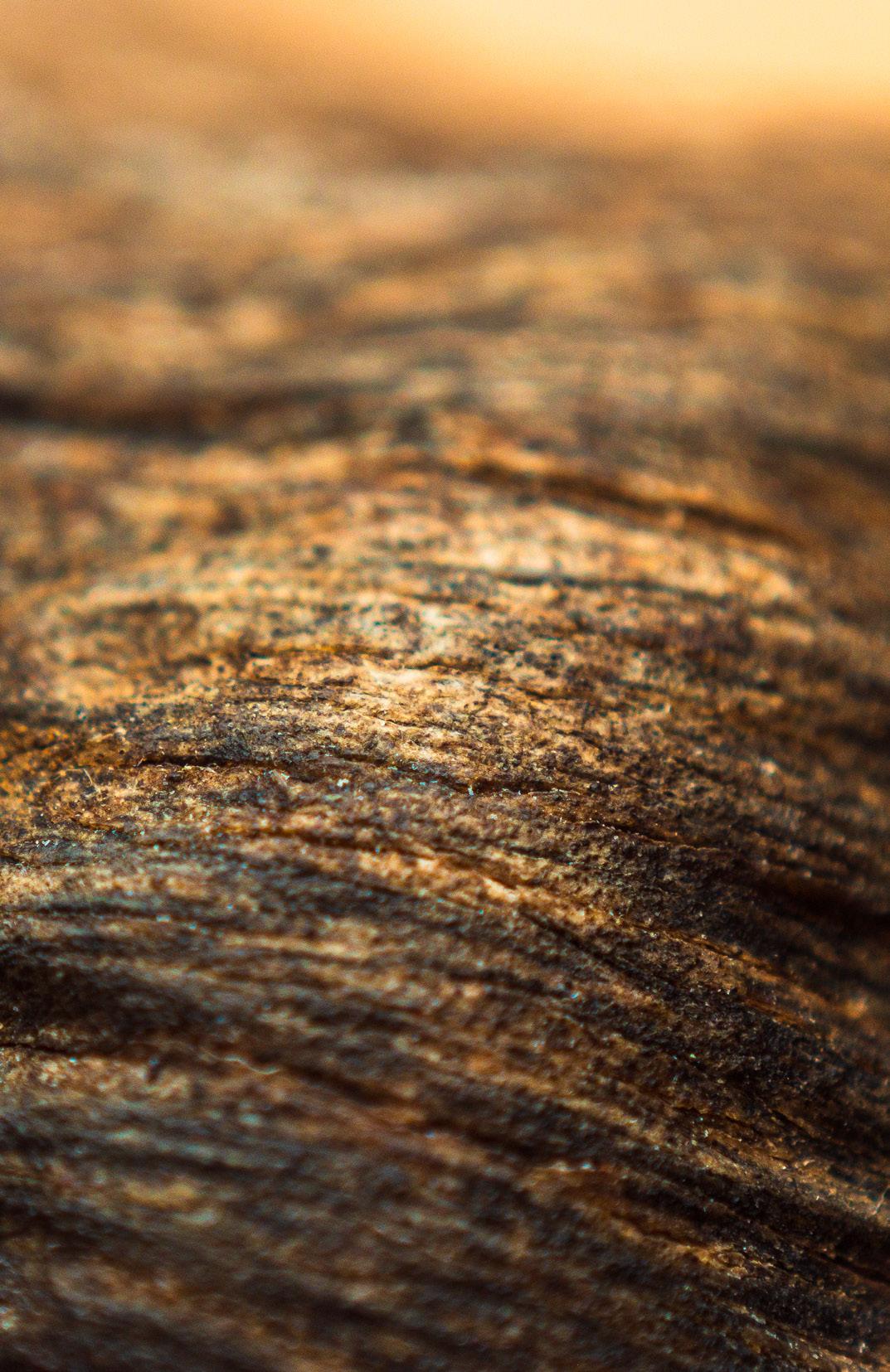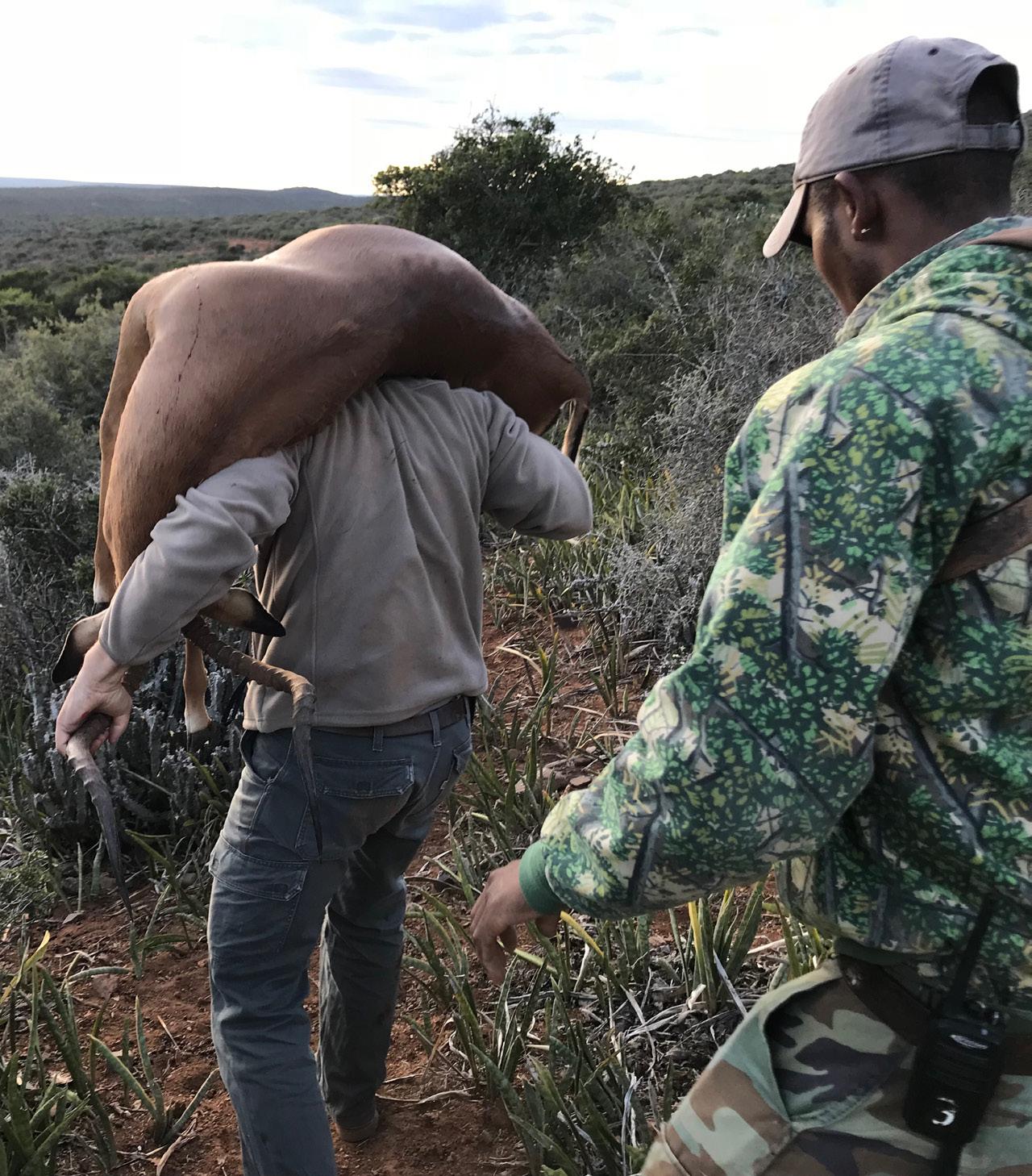
5 minute read
GOLD LEVEL IMPALA?
MEMBER
By M. Arnold

“THAT IS AN ENORMOUS IMPALA RAM!” exclaimed my PH, Arnold Claassen. I responded, “I’m really not excited about taking an Impala.” This interaction occurred split seconds after an apparently ‘enormous’ male Impala launched himself over the fence in front of us as we drove down one of the side roads on the Blaauwkrantz Safaris ‘farm’. Later, I understood that my apathy was misplaced, but I have to admit that the photos of Southern Impala rams I had seen seemed to show horns that were so…well…small and unimposing compared to those worn by animals from further to the north. As a biologist, and a hunter, I understood that it was unfair to compare apples with oranges. The Impala further north and those I was currently around obviously had different genetic and ecological constraints that caused the difference in horn size, but honestly I was flat unimpressed by the southern form. I didn’t yawn exactly when my PH made his exclamation, but it was a close thing. Arnold responded to my disdainful remark and attitude by turning his head slightly, giving me a stink-eye and growling, “If we see that ram again, you better shoot him, or I’ll shoot him myself.” Arnold played competitive Rugby when he was younger so, better part of valor in mind, I held back the smart-alecky comments that were circulating in my brain.
In spite of my dismissive attitude, I began to notice that many of the rams on the Blaauwkrantz property actually had beautifully shaped horns that looked larger than what I had expected from Southern Impala. Obviously, given this was my first African safari, it was arrogant of me to think I had an opinion of what an animal should or shouldn’t carry in the way of horns; the rams we were constantly running across were chipping away at my lessthan-humble attitude. The problem was that by the time I woke up to the trophy quality of the Impalas I was seeing, I had collected a number of my primary animals, and had added to my wish list a number of pygmy antelope. So, frankly, my budget was being challenged (read: “torn asunder”) already. This resulted in the following deal being struck with Arnold. I agreed to shoot an Impala, but only if he knew with certainty that it was at least as large as the huge ram we had seen on Day 2.
I was really comfortable with the above plan because I assumed that it gave me an excellent chance of not having to add yet another trophy fee. Unfortunately, my smugness reflected a serious load of…naïveté. You see, I did not take into account that, apparently, Impala rams tend to hang about in the same area, especially when their minds are filled with the sweet refrains of love songs. We were in the middle of the rut. Arnold knew this, and he knew
Previously apathetic hunter doesn’t seem apathetic any longer.

where we were likely to find the ram tending his ewes. So, daybreak of Day 5 found us glassing a distant slope that was almost completely covered with the dense vegetation of the Eastern Cape lowlands. Though mostly hidden, we were watching the head and shoulders of a group of Impala that included several ewes and one enormous ram, probably the same monster seen three days before. We were able to approach to within 250 yards – as determined by Arnold’s rangefinder – and get me set up on a sturdy rest. While waiting for the ram to present an opening for a shot, I had a wonderful, if a bit tense, experience of watching the ram and ewes stretching their necks and using their tongues to browse on the succulent leaves located all around them.
Our vigil seemed to last for hours, but it actually only took up some 30 minutes. The ewes continued to slowly eat their way up the slope, with the ram concentrating on browse that kept him on the same level, moving slightly away from his females. In the midst of his feeding, he suddenly took notice of the group of humans staring intently at his harem and himself. He stood for a moment with his ears and eyes focused on our position and then began to walk right-to-left across the slope. Arnold stopped him with a bleat just as he entered one of the very few openings in the vegetation. Expecting the 175 grain Nosler Partition from my 7mm Remington Magnum to drop a few inches, I held high on the ram’s shoulder. We found later that the bullet had indeed dropped, taking out both shoulders and wrecking his heart in the process. As usual, I lost the animal in the recoil, and by the time I was able to focus again on where the ram had been, he had disappeared. I looked to Arnold and Neville, our tracker, and the former said, “Your shot looked good.” Though encouraged, unless I can see the animal down, I always worry.
Neville headed up the slope, carrying one of the radios. Arnold and I stayed where we were, with Arnold using his radio to provide directions to Neville. I realize that the search for the Impala didn’t take as long as even the short wait I had endured for the shot presentation, but once again I was in serious anxiety by the time Neville radioed that he had located our trophy. When Arnold and I finally reached Neville and the Impala, I had to admit that I had been very, very wrong about the Southern Impala lacking the beauty of its northern cousin. Our ram had an outstanding shape and, as an unlooked-for bonus, we would find that his horn length would result in a gold level award from Safari Club International. I thought to myself as I stroked the horns and smooth coat of this animal that, “in reality, the trophy fee is trivial compared with the opportunity to hunt such an outstanding animal, and for the dream-making it provided.” And, yes, I was practicing for ‘the talk’ with my long-suffering, but also very understanding, wife. ★
Below right: It is very, very useful to have a PH who used to play rugby, especially when you want a trophy animal carried to a place that is more photogenic. Below center: Impala aren’t just beautiful, they’re tasty too—an Impala roast and birthday cake ready for a celebration dinner at Blaauwkrantz Safaris.











